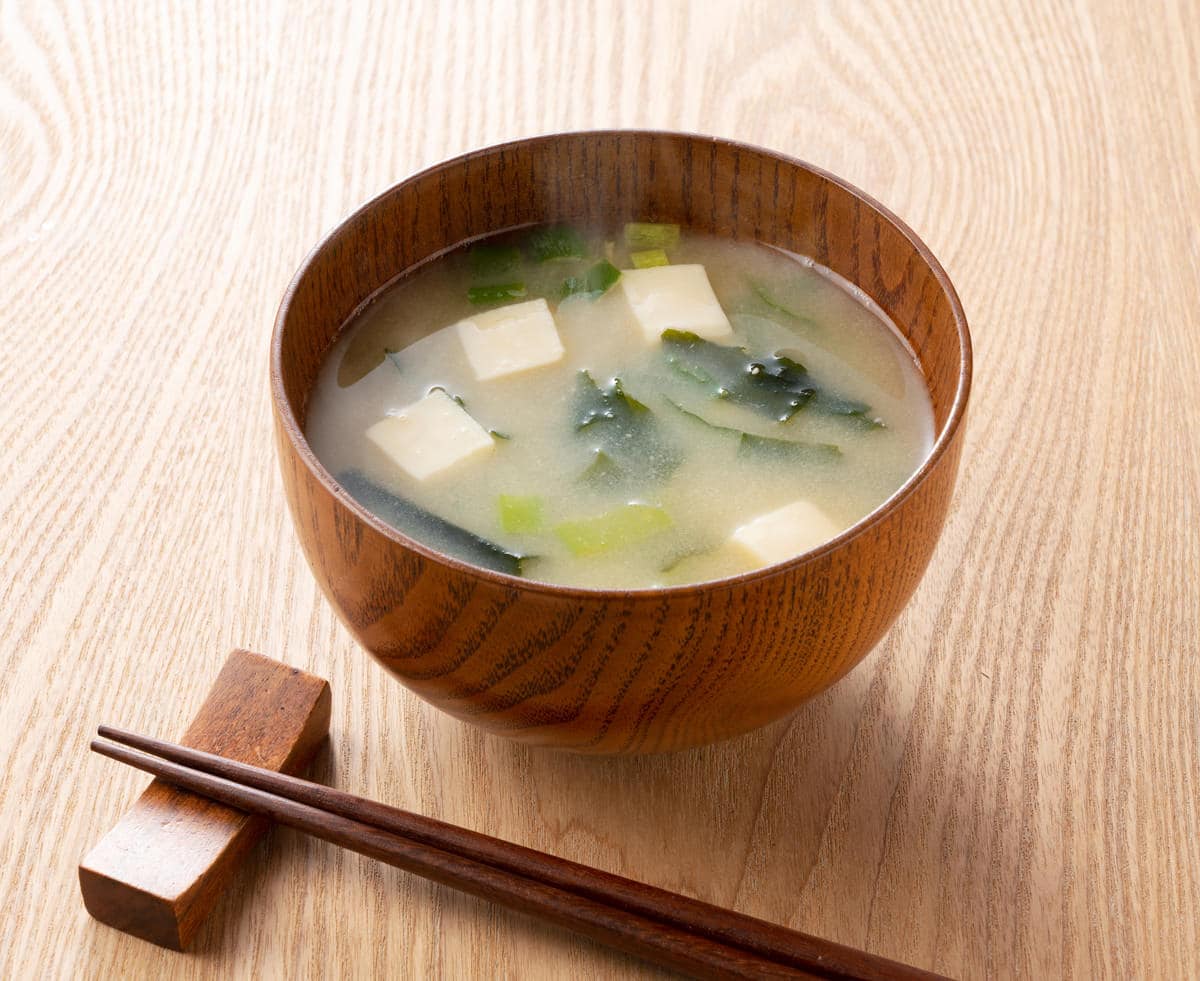You’ll be surprised to know that traditional miso soup is not vegan because the stock contains tuna shavings. But it is possible to make vegan versions of miso soup.
Miso soup, originally from Japan, is slowly gaining popularity in the West thanks to its pungent flavor and distinct taste.
This dish is typically served with tofu and a few different veggies, and miso soup looks vegan to the naked eye.
But as most vegans are aware, appearance alone isn’t a good indicator of whether something is vegan or not. And before digging into your helping of miso soup, it’s crucial to determine whether it’s plant-based.
Miso Soup: Ingredients
Miso soup is typically served before meals as the fermented foods in it help with digestion.
A steamed soybean paste forms the base for miso soup. To this base, the Japanese add salt and another ingredient called koji, the Japanese word for fermented rice, soy, or barley.
As such, koji can be made in a few different ways, and the soup’s flavor will differ depending on the base used.
A stock (water in which different ingredients have been boiled) is then added to this base, causing it to release a distinct, pungent flavor. To this stock, you can add veggies, tofu, or anything else you’d like for a warm, comforting meal.
Why Miso Soup Isn’t Vegan

If you went through the ingredients, you might have noticed that the only things mentioned were soy, rice, barley, and salt. Sounds like miso soup is vegan by default, right? Well, not quite.
The traditional stock added to miso soup is known as katsuobushi dashi, and this one ingredient makes miso soup non-vegan.
Katsuobushi dashi is a stock made from shiitake mushrooms, tuna shavings, and in some cases, whole sardines. The addition of this traditional Japanese stock makes miso soup non-vegan.
Can Miso Soup Be Vegan?
Like most recipes adapted to the vegan palate, miso soup can be tweaked to make it suitable for vegans.
As mentioned, the only distinctly non-vegan part of miso soup is the stock due to its ingredients. However, you can always make your own stock using vegan ingredients and add it to miso paste for a different taste.
And if you’re worried about altering the taste, consider using seaweed to make the dashi so you can replicate the fishy taste that accompanies the traditional stock.
The best part is you can buy the traditional miso paste at most grocery stores and add it to your preparation. And most of the store-bought pastes tend to be vegan, using either mushroom or kelp instead of tuna shavings. You can also find different types of miso paste that will suit your palate.
White Miso – White miso has a sweeter flavor than traditional miso and uses more rice than regular miso paste.
Red Miso – Red miso contains a much stronger flavor; some varieties use rye and barley along with rice. The soy is typically fermented for much longer in red miso soup.
Yellow Miso – Yellow miso has a moderately spicy flavor and uses some elements from both red and white miso paste.
So if you’re looking for vegan miso, get yourself one of these pastes and make the veggie broth at home using kelp. You won’t be able to tell the difference!

